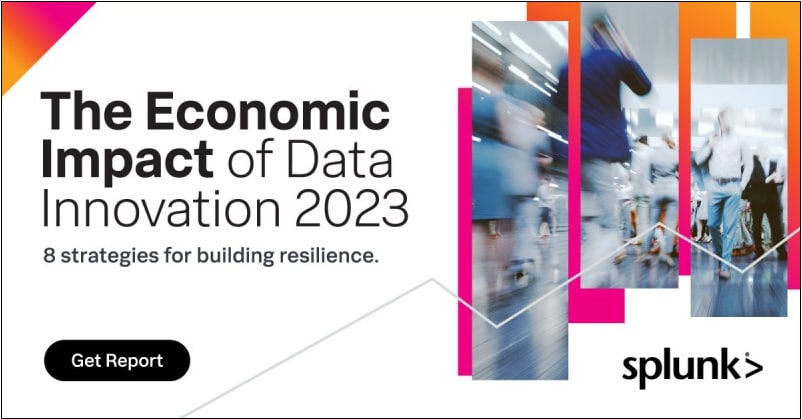 By Blessing Onyegbula August 24, 2023
By Blessing Onyegbula August 24, 2023
Imagine yourself with a folder containing millions of gigabytes of data. If you were asked to process it with an Excel spreadsheet, you wouldn’t need to be a data expert to know that’s impossible.
We refer to that amount of data as “big data”. Big data requires advanced techniques, tools, and methods beyond what regular data analytics entails, which is where big data analytics comes in.
Big data analytics is how organizations make sense of large volumes of data, coming in different forms, from various sources and at breakneck speed.
In this article, we’ll unpack the must-knows of big data analytics, focusing on its real-life applications, benefits, challenges and the tools big data analytics professionals use.
What is big data analytics?
Big data analytics is the act of analyzing large volumes of data using advanced data analytics tools and techniques. Big data, can be structured or unstructured based on their characteristics including the 3Vs:
- Volume
- Velocity
- Variety
Data is all around us — from our social media interactions, emails, traffic data or financial transactions. To make sense of all that data, we use advanced techniques and tools to extract unique insights, draw patterns and predict trends.
Some of the big data analytics techniques are:
- Machine learning is an aspect of artificial intelligence that allows computers to learn and imitate past experiences and human behavior. For it to work, a large volume of data has to be fed into the system to boost its accuracy level to near perfection.
- Predictive analysis, as the name implies, uses historical data and statistical algorithms to forecast future events.
- Data mining involves searching through large datasets to unearth patterns, make connections and extract insights.
- Natural Language Processing uses computer programs to understand and interpret human language, whether as text or voice.
In big data analytics, you don’t only analyze data; you also develop prediction models, create visualizations, and communicate insights to stakeholders.
Real-world examples of big data analytics
You can find different big data analytics applications globally in different industries and sectors, with even more use cases still being discovered. Here are some examples of big data analytics at work:
Government
Governments worldwide rely on all sorts of data from different sources to run their affairs. It helps in formulating policies, allocating resources and keeping up with global and local trends. Another instance is during the population census, where big data analytics can process citizens’ data according to demographics, gender, age, and other criteria. During elections, candidates also rely on insights from data to plan their campaign strategy — and some countries even run their elections entirely via digital means.
Case study: In the first half of 2023, the Ministry of Communication, Telecommunications, and Digital Economy of the Republic of Senegal (MCTEN) signed an MoU with Presight AI, a big data analytics company powered by Artificial Intelligence. This is in a bid to achieve their goal of empowering the country digitally. The public-private partnership will focus on:
- Improving the efficiency of the government’s operations.
- Creating an enabling business environment.
E-commerce
The e-commerce industry has also felt the impact of big data analytics, which has, in turn, led to the rise of online shopping. Some of these areas are personalized shopping experiences by building on the insights provided by customers’ purchase history, browsing patterns, and feedback.
E-commerce marketing has gotten a big boost from big data analytics — just look at all the options for improved customer segmentation (especially with email marketing), ads, and marketing campaigns.
Case study: E-commerce giant Amazon uses big data analytics data to recommend products to users based on their browsing patterns, shopping history, and other factors. This has boosted the shopping experience for users on the platform, and practically become the global standard for online shopping.
Cybersecurity
No doubt, there has been a rise in cyber crimes. Detection and prevention of those crimes wouldn’t be possible without big data analytics. For instance, advanced storage facilities can help store and process data from different sources, making it easy to send alerts if indicators of compromise (IOCs) and indicators of attack (IOAs) are detected. Insights from big data analytics contribute to building algorithms for threat detection and hunting, forecasting, and launching an incident response plan in the event of an attack.
Case study: Carrefour, a leading retailer, relies on insights from Splunk Cloud Platform to centralize its data, especially security logs, boosting its response time to security threats three times over.
Even better? With shorter response times, the security teams are able to focus on value-adding work.
Healthcare
Medical diagnosis, research, and patient care improvement can be tied to big data analytics and the accompanying knowledge it brings. An instance of this is how big data analytics boosts the accuracy of diagnosis by helping medical professionals make better sense of patients’ medical history and effectively dig through previously reported or similar cases.
Plus telemedicine, which is gradually making waves, works with big data analytics to make healthcare more accessible and affordable.
Case study: Flatiron Health and many similar healthcare startups use big data analytics to process billions of data points on cancer, empowering more health professionals with the proper knowledge and techniques to care for cancer patients.
Why is big data analytics important?
The importance of big data analytics lies in the insights it generates and the potential value such insights hold for businesses. This value reflects within the organization, their profit margin, and how they keep up with industry trends.
Organizations that use big data benefit in the following ways:
Gain competitive advantage
Competitive advantage comes from different areas. It could be first mover privilege, better marketing, or better product, all of which can happen courtesy of quality data. And with more data at our disposal, whoever harnesses such extensive data can figure out the secret to gaining a substantial chunk of the market share.
Unlocks business insights
Courtesy of the advanced tools and techniques used in big data analytics, organizations can expand their knowledge about business operations, customers' needs, and industry trends. These insights will subsequently contribute to the business’ growth and help forecast market direction so they stay ahead.
Strengthens product development
Without adequate data and research, figuring out customers’ needs and creating a product that solves them will be a herculean task. However, with big data analytics, you can better direct your product development process, improving your chances of creating a viable product.
Improves marketing
Using big data analytics to analyze customer demographic, behavior, reviews, business offer, and market trends can help you nail customer targeting, messaging, and a business’ unique selling proposition, all of which are part of the formula for great marketing.
(See how product analytics & web analytics also enhance your marketing strategy.)
Boosts operational efficiency
You can improve business operations by using big data analytics tools to store and process information about employee performance, business loopholes, and operational costs. Afterward, you use the information to reward high performers, motivate other workers, and figure out areas to cut costs or allocate more resources.
Challenges of big data analytics
Big data analytics may have data professionals heaving a sigh of relief when working with large volumes of data, but certain aspects still call for concern. Some of the challenges of big data analytics include:
Data quality
Data is as valuable as the insights it generates, making data quality a priority in big data analytics. However, despite the advancement in the big data analytics space, issues like data synchronization, credibility of data sources and the strength of data analytics tools have made data quality a far-fetched goal.
Data accessibility and privacy concerns
The availability of numerous data sources, data breaches, and blurred lines around data sharing/use heighten data accessibility and privacy concerns. Now, companies have access to customers’ data without their consent but use them in ways that violate customer relations and data laws.
Budget constraints
The cost of implementing data analytics tools and hiring data professionals remains a stumbling block for organizations looking to make the switch.
Big data analytics tools you should know
Big data analytics doesn’t start and end with one tool. Organizations that employ its techniques use various tools for storage, data cleanup, data classification, and analysis. Here are some of the big data analytics tools you should know:
Splunk
Splunk is a data platform designed to help organizations centralize operations across data analytics, security, and IT observability. Splunk offers a whole suite of various software, apps and APIs, plus a whole lot of flexibility. Our solutions help organizations mature your digital resilience, so you can adapt to anything. The most-well known Splunk products include:
- Splunk Enterprise lets you search, analyze and visualize all of your data, providing insights you can act on.
- Splunk Cloud Platform which offers data search, analysis and visualization in the cloud (SaaS).
- Our Universal Forwarder is the most popular way of getting data into Splunk Enterprise and Splunk Cloud Platform.
- Our SIEM, SOAR and observability solutions.
(See more of what Splunk does.)
Apache Hadoop
Apache Hadoop is a popular big data analytics solution. It’s built on the Jave framework and can process large and complex data in an open-source distributed environment. As a plus, knowledge of Hadoop also helps your understanding of big data in general.
Qubole
This simple and open-source data lake platform helps with predictive analysis, data engineering, and Machine Learning. It has a cloud support system for platforms like AWS, Microsoft, and Google Cloud, significantly reducing cloud costs by up to 50%. It’s also self-service, making it customizable for data professionals' specific needs.
MongoDB
MongoDB is an open-source cloud-based NoSQL database for handling structured and unstructured data. MongoDB categorizes data into collections instead of regular rows and columns, stored in a document using a Binary JSON(BSON) format. It has a more robust storage capacity, scalable, and supports multiple programming languages like Python, PHP, and C++ making it a go-to solution for developers and enterprise data management.
SAS
SAS, an abbreviation for Statistical Analytics System, is a suite of products designed by the SAS Institute for data management and advanced analytics. Big data analysts use it to create data models for mining, reporting and even updating data sources.
Tableau
Tableau is a data visualization software for business intelligence and big data analytics. Its major strength lies in its user-friendly interface that allows users to view and make sense of large volumes of data. With it, you can store, prep, analyze, and even access data from multiple data warehouses without coding.
R-programming
Unlike previous examples, R is a programming language for statistical programming and data visualization. It’s free, open-source, and regarded as one of the most popular programming languages amongst data analysts. It helps with data cleaning, reporting, and quantitative analysis. Its use case also extends to data reporting manipulating and accommodating other languages like C, C++, and Fortran.
Making the most of big data analytics
You will miss so many details, opportunities, and insights by not implementing big data analytics in your organization. Worse, going about it the wrong way can affect your data quality and produce a low return on investment. By considering the benefits, challenges and best tools for big data analytics, organizations can make informed decisions and put all of their data to good use.
What is Splunk?
This posting does not necessarily represent Splunk's position, strategies or opinion.
